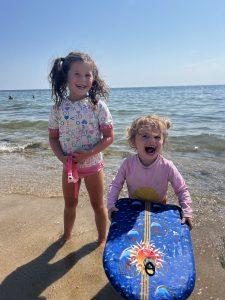
Even though much of the weather in April has seemed more like winter, before long the calendar will turn to May. That means summer is coming! With Memorial Day weekend right around the corner, if you haven’t started seriously thinking about ways to keep your kids water safe, then it is time to do so. As a mom of two young children who spend as many days as possible on the beach, I can speak from experience when I say setting up my kids with the right tools for water safety is always at the top of my mind.
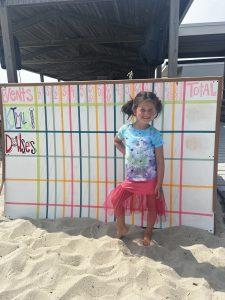
Different Types of Swim Lessons
Both of my girls—ages 2.5 and almost 6—have done different kinds of swim lessons through the years. We’ve done lessons during the summer in the ocean and during the winter at various YMCAs and other indoor locations. With that said, we took very different approaches with swim lessons for each daughter. I don’t think either approach has been better than the other. Both of my daughters love the water and are learning the skills they need to be safe and confident when swimming, whether in the ocean or a pool.
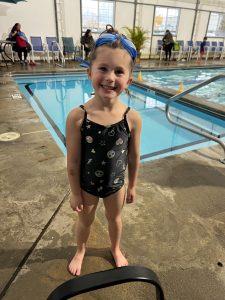
With my oldest, Charlotte, we went the more traditional route of swim classes at a variety of places, including lessons in the ocean through the Barnstable Recreation Department at Kalmus Beach. Charlotte always enjoys being in the water and is turning into quite the little swimmer. She also has received terrific swim lessons during the off-season at Vanderbilt Club in Norwood. It has been remarkable watching how much she improves with each passing month as she gets more comfortable in and around the water.
Having one child means undivided attention at all times. When I had my second daughter, it became clear that everything would change. That’s why I decided I wanted Addison to do a more survival-focused swimming class. As such, she has done Powers Aquatics since she was about six months old.
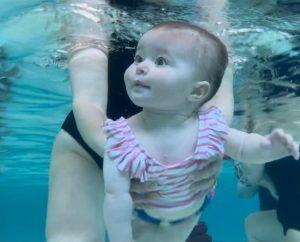
If you’re not familiar with Powers Aquatics, it’s a safety-focused program that teaches kids how to self-rescue. Starting at the first lesson, babies are swimming underwater and learning how to swim on their own. Now that she is 2.5, Addison can swim underwater at distances of more than six feet and can roll to her back and float.
6 Expert Tips to Keep Your Kids Water Safe
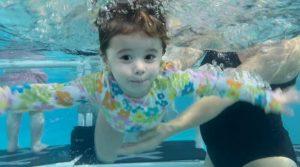
I recently spoke with the owner of Powers Aquatics, Kristen Seaton, who is extraordinarily devoted to teaching both parents and children about safe swimming. Kristen provided me with the following tips that will hopefully help you to keep your kids safe around the water this summer.
- Get in the water with your kids! So many times I see young kids in flotation devices in the pool without an adult in the water with them. Parents are now relying on that flotation device to save their child. They are often distracted and not truly watching their kids.
- Ditch the flotation devices! We say this constantly—do not put your child in a flotation device in the pool. This puts them in a vertical position in the water which is also the same as drowning position. Kids develop muscle memory pretty quickly. Using a flotation device is actually a huge detriment to teaching them how to properly swim. It also develops a false sense of confidence in them. We have heard countless stories from parents who have lost children to drowning. They say that: 1) their child drowned during non-swim times, and 2) their child was wearing a flotation device prior to drowning.
- Enroll your child in swim lessons that do not utilize flotation devices and that focus on self-rescue. Swim lessons CAN be fun, but the focus should be on teaching them a life-saving skill.
- Appoint a watch-watcher! This is someone who has the sole purpose of watching the people in the water. They should be free from distraction.
- Develop layers of safety around water and teach them to your children. Layers of safety include fences around bodies of water, swim lessons, permission to enter into any body of water, and what it looks like to be safe in the water.
- Keep your pool clear of pool toys! We do not allow any rafts, tubes, etc. in our pool because it is hard to see under them. Kids easily fall off of them and it is very difficult to get back on. Balls, dive toys, etc. should be removed from the pool after each use.
From my firsthand experience with Kirsten’s program at Powers Aquatics, the bottom line is the importance of ensuring your kids are equipped with the safety tools they need to succeed in and around the water. Between lessons, boundaries, and being present, you have the power to create a safe swim experience for your children.
Do you have a favorite swim program on Cape Cod? If so, we’d love to hear from you! You can tag us at @CapeCodMoms or @Snfenlon.








